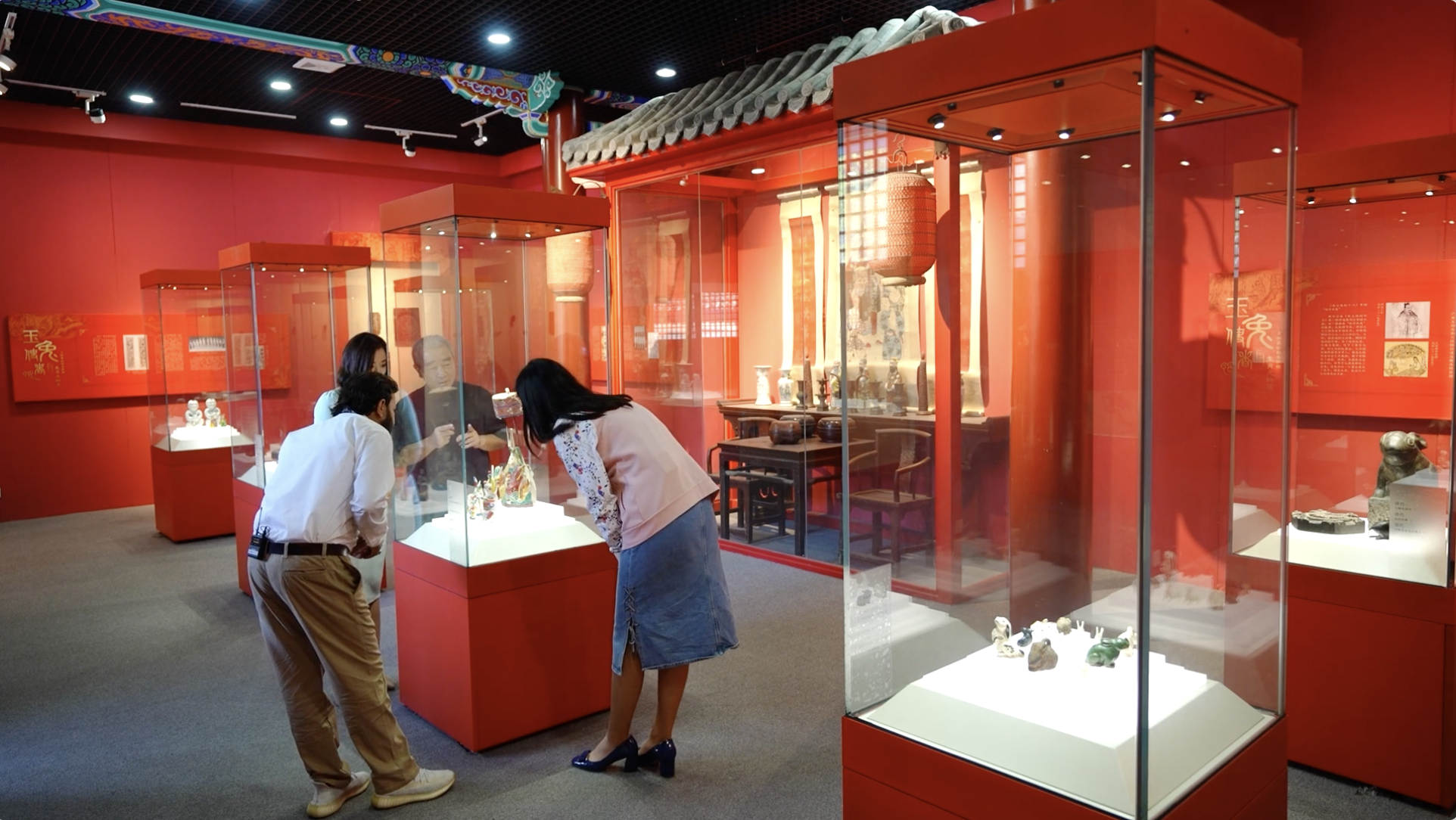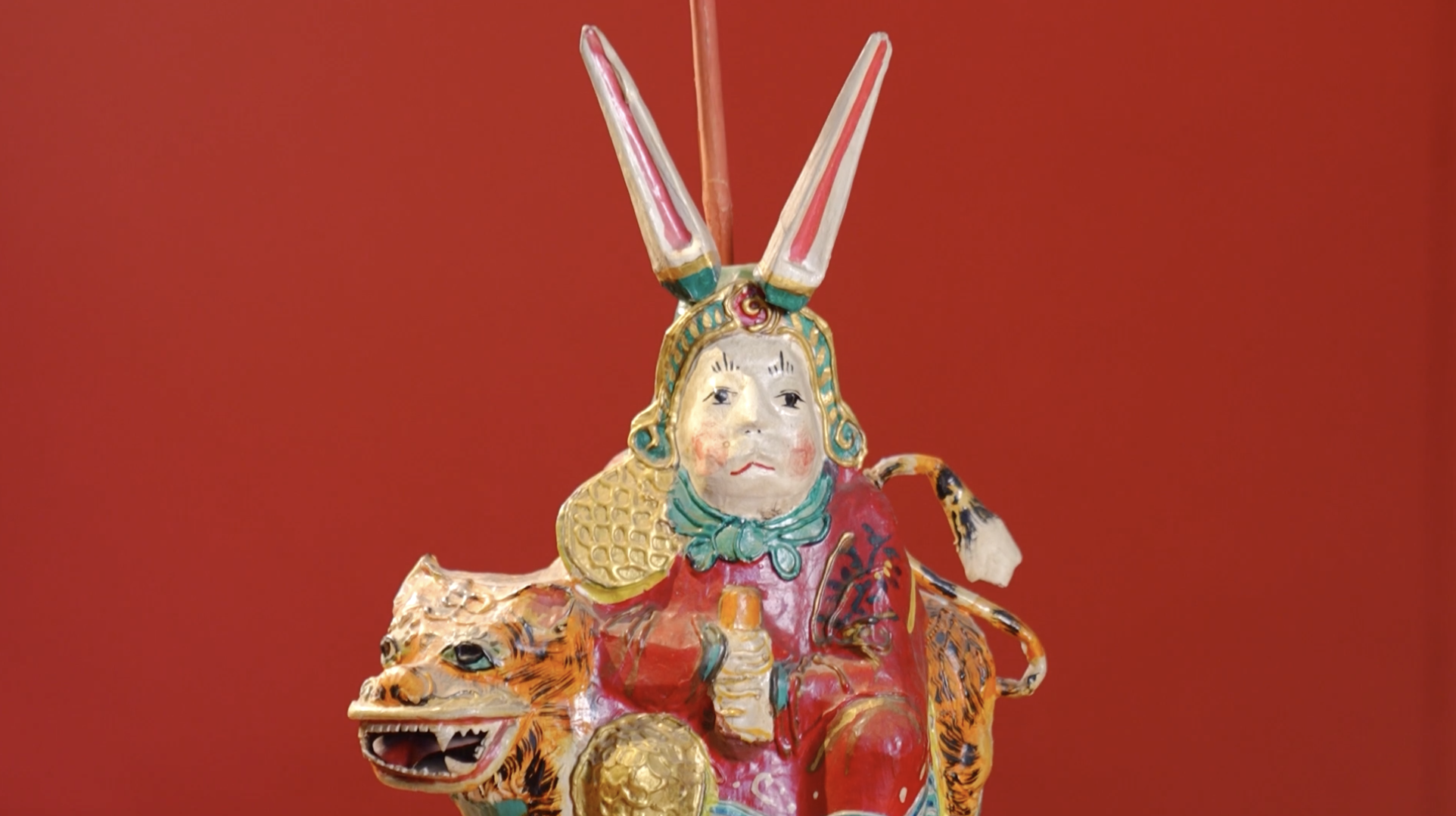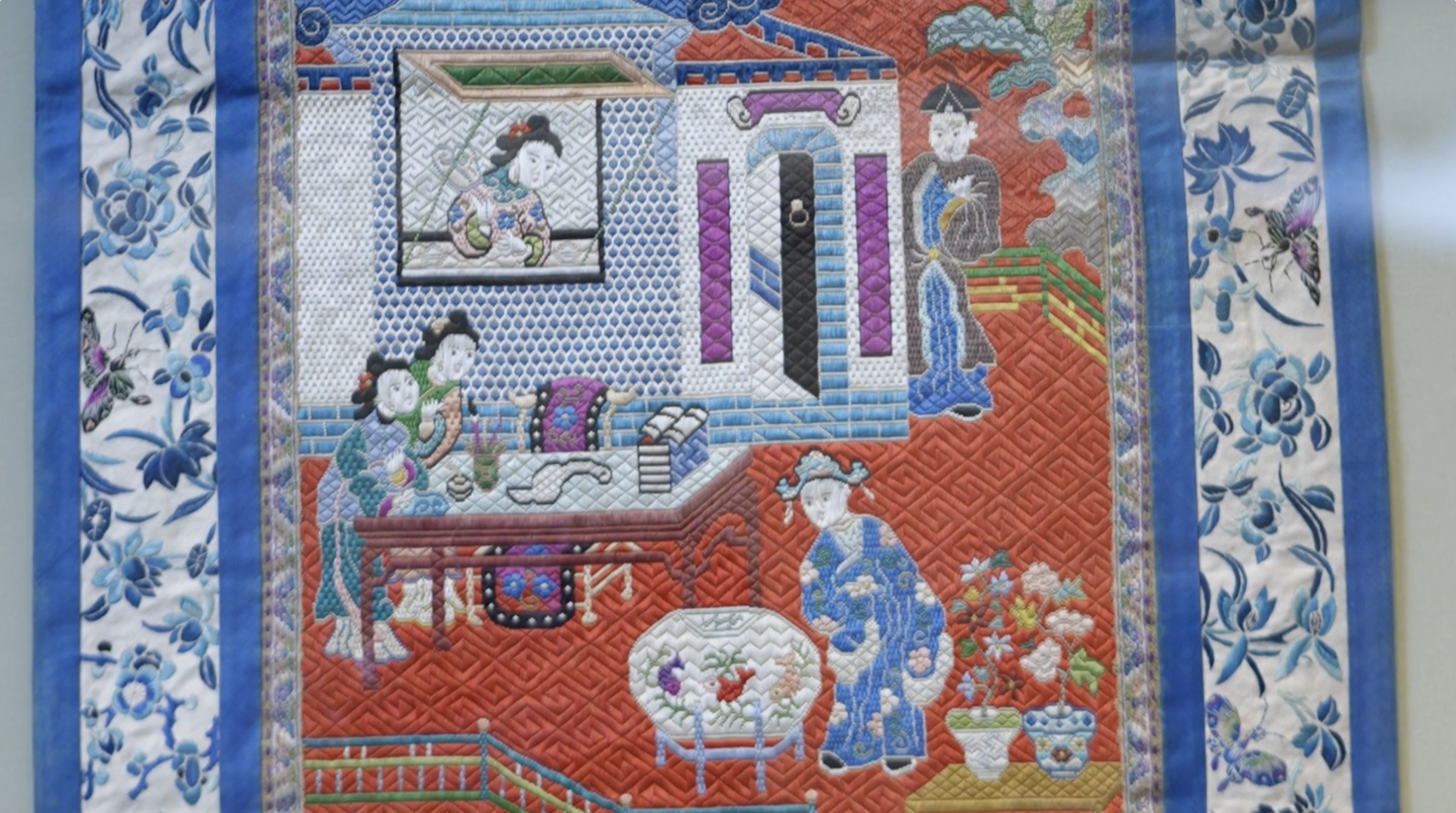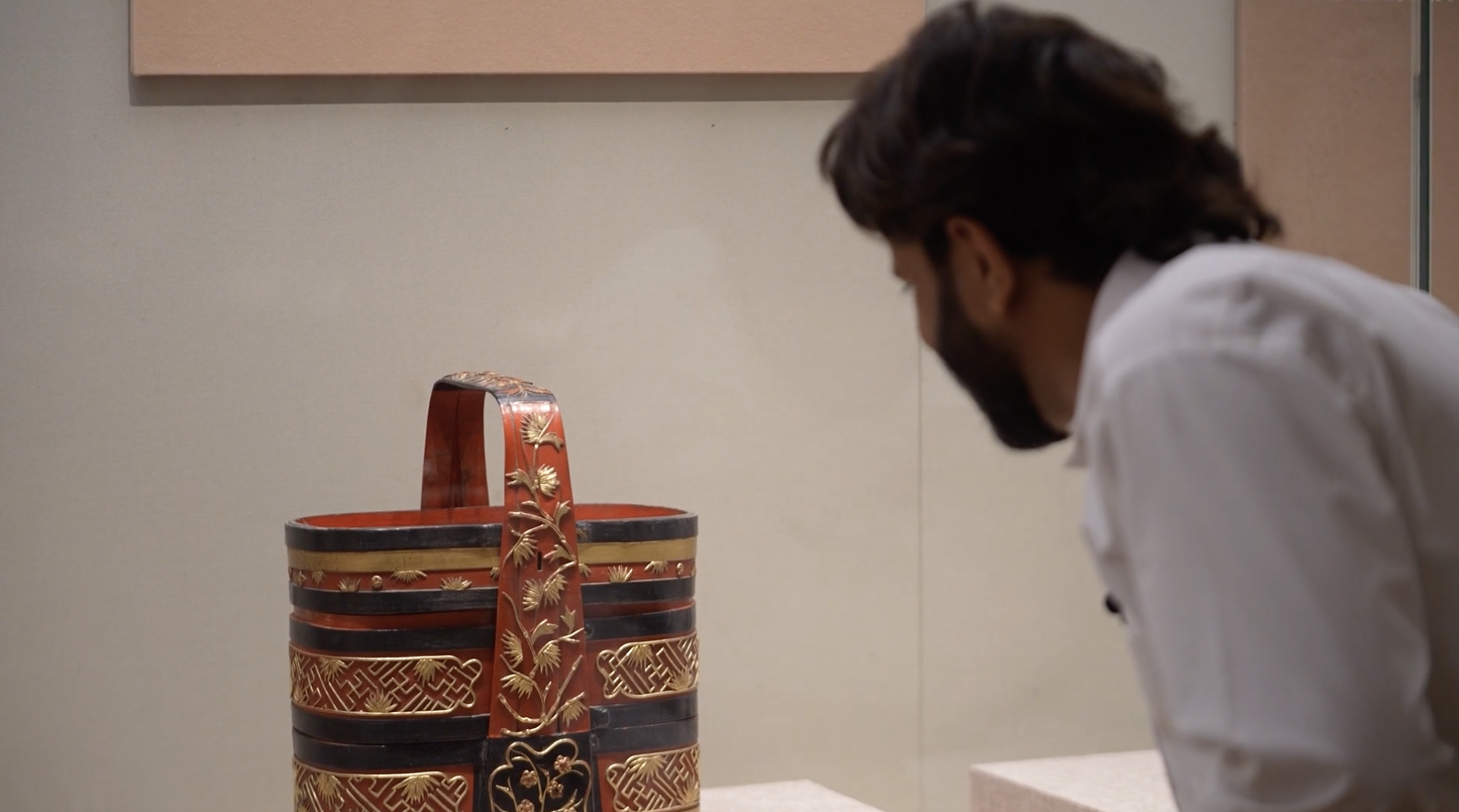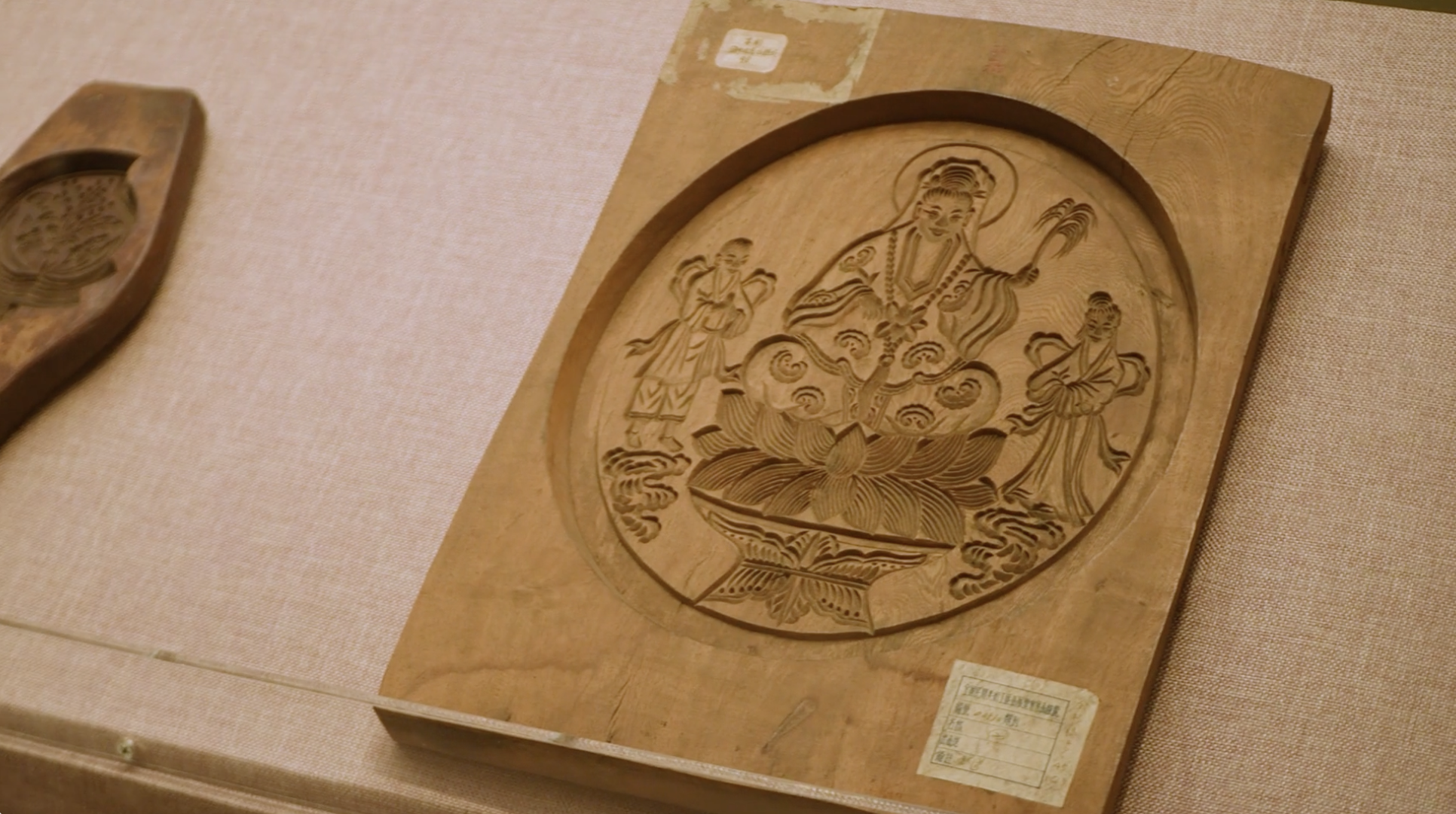Dating back over 3,000 years, Mid-Autumn Festival is a cherished tradition in Chinese culture. Simultaneously, the Asian Games, featuring a captivating array of sports, is being held in east China's Hangzhou, bringing together athletes from across Asia. CGTN's Caroline Wu invited two guests from Asian countries to explore a collection of intricate cultural relics centered around the theme of Mid-Autumn Festival. Aminaa Norjmaa from Mongolia is currently studying at Tsinghua University's Social Science Department. Jawad Shabbir from Pakistan is a PhD scholar at the School of Earth and Space Science at Peking University. Together, they journeyed through millennia of history and gained insights into how ancient people commemorated this occasion.
Beijing Folk Custom Museum curator Cao Yansheng introduces the exhibits to two guests and CGTN's Caroline Wu. / CGTN
Cao Yansheng, the curator of Beijing Folk Custom Museum, said it is customary for old Beijingers to summon the Rabbit God when Mid-Autumn Festival comes around. One of the relatively prominent exhibits in this museum is an image of the Beijing Rabbit God during the late Qing Dynasty (1644-1911) and Republic of China (1912-1949) periods. This is claimed to be the oldest Rabbit God image in Beijing. On the day of Mid-Autumn Festival, Beijingers would buy rabbit god figurines at the market or temple fair for children to play with.
One of the exhibits, the Rabbit God, at the Beijing Folk Custom Museum in Beijing. / CGTN
"In Mongolia, we have a legend of the horse. Various traditional festivals and horseback riding are closely related, and the most important one is the Nadam Festival," said Norjmaa. "During the Nadam Festival, we really enjoy horseback-riding and archery. We all believe that horses are our true friends, bringing us a bright and prosperous future."
Next, curator Cao introduced a ring from the Qing Dynasty, which is carved with two Chinese characters that mean "Mid-Autumn Festival." He said it is both a ring and a seal.
"How beautifully they have engraved these Chinese characters on this one. At that time there was no advanced technology," Shabbir commented, "Now I'm convinced that this is the rarest piece in the world. It's very ancient."
Then, the three went to Tsinghua University Art Museum. Its executive director Du Pengfei explained the collections to the guests. He said the counted-thread embroidery mirror curtain from the late Qing Dynasty to the Republic of China period illustrates the folklore of "Su Xiaomei's Three Difficulties with the Groom Qin Shaoyou." After a long romantic period of courting, the two get married. The wedding night was held during a full moon. "Look at that moon, with a Chinese character 'Moon' embroidered in the middle, which means it happened at Mid-Autumn Festival. A full moon usually represents a happy marriage," Du said.
The counted-thread embroidery mirror curtain from the late Qing Dynasty to the Republic of China period illustrates the folklore "Su Xiaomei's Three Difficulties with the Groom Qin Shaoyou." / CGTN
Shabbir said embroidery is an integral part of many Kashmiri handicrafts, shawls, and carpets. "It really reminds me of my Kashmiri culture," he said.
Then Du introduced a lacquer portable box to the guests. He said mooncake eating during Mid-Autumn Festival usually happens outdoors. After the moon rises, the whole family sits around a small table in the yard and places mooncakes, fruits, and tea on the table while admiring the moon. The ancient Chinese use the lacquer portable box to take food outside to enjoy while appreciating the moon. Decorated with auspicious flowers and plants, it reflects the owner's elegant lifestyle.
The lacquer portable box decorated with auspicious flowers and plants is exhibited at Tsinghua University Art Museum in Beijing. /CGTN
Shabbir said, "Ancient Chinese civilization shows that those people are art-loving; so this is the reason that they have decorated all their domestic stuff."
"This large mooncake mold has been a cultural relic for nearly one hundred years," Du explained. He said the larger the mooncake, the greater the population and influence of a family. Eating big mooncakes brings great blessings. This mooncake mold carries the beautiful message of people seeking to have more children. It is believed that more happiness comes with more children.
A large mooncake mold is exhibited at Tsinghua University Art Museum in Beijing. /CGTN
Norjmaa said Chinese history and culture is not only famous in China, but has also spread to Asian countries. When she ate a mooncake for the first time, she thought it was just a snack; but after she understood the long history and tradition, she realized that it symbolizes success, happiness, wealth, and good wishes.
"After knowing the stories and history of the mooncake, I would like to taste the sweet one," Shabbir said, "This is my very first experience of Mid-Autumn Festival in China. Having an opportunity to see different festivals from a new culture is a wonderful experience. The world is so beautiful when we appreciate and exchange cultures."
